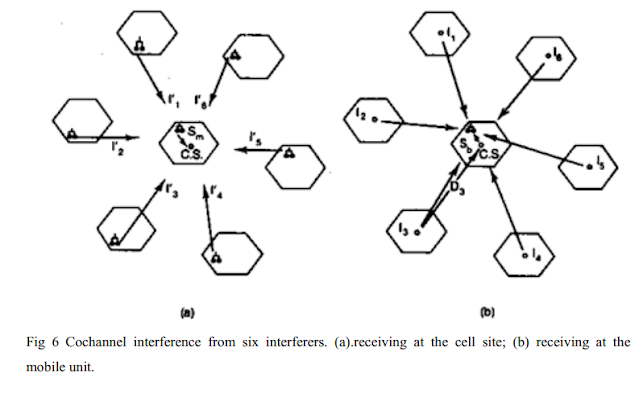Derive the C/I for normal case in an omni directional antenna system
5. Derive the C/I for normal case in an omni directional antenna system.
There are two cases to be considered: (1) the signal and co channel interference received by the mobile unit and (2) the signal and co channel interference received by the cell site. Both cases are shown in Fig.6. Nm and Nb are the local noises at the mobile unit and the cell site, respectively. Usually Nm and Nb are small and can be neglected as compared with the interference level. As long as the received carrier-to interference ratios at both the mobile unit and the cell site are the same, the system is called a balanced system. In a balanced system, we can choose either one of the two cases to analyze the system requirement; the results from one case are the same for the others. Assume that all Dk are the same for simplicity, then D = Dk and q = qk,
The value of C/I is based on the required system performance and the specified value of is based on the terrain environment. With given values of C/I and , the co channel interference reduction factor q can be determined. Normal cellular practice is to specify C/I to be 18 dB or higher based on subjective tests. Since a C/I of 18 dB is measured by the acceptance of voice quality from present cellular mobile receivers, this acceptance implies that both mobile radio multi path fading and co channel interference become ineffective at that level. The path-loss slope is equal to about 4 in a mobile radio environment.
The 90th percentile of the total covered area would be achieved by increasing the transmitted power at each cell; increasing the same amount of transmitted power in each cell does not affect the result. This is because q is not a function of transmitted power. The factor q can be related to the finite set of cells K in a hexagonal-shaped cellular system by
Substituting q = 4.41 in above equation yields k=7.
 |
| Cochannel interference from six interferers |


